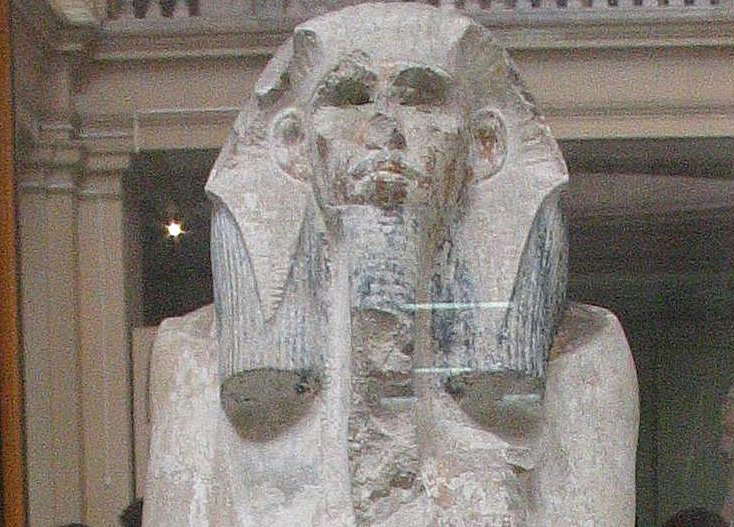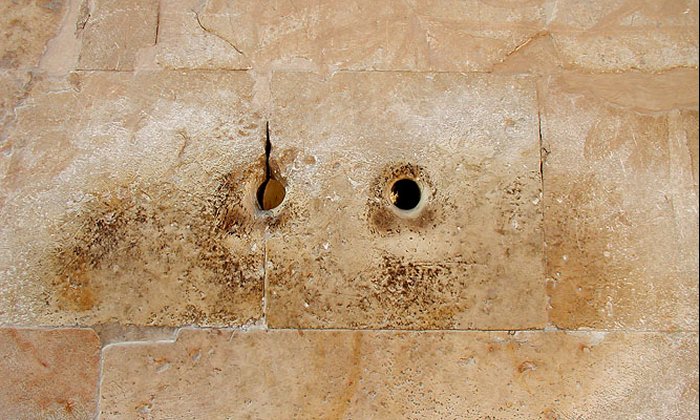Djoser – Most Outstanding King Of The Third Dynasty In Ancient Egypt And His Step Pyramid
Angela Sutherland - AncientPages.com - Djoser was possibly the founder of the Third Dynasty of the Old Kingdom in Egypt. The Old Kingdom began with the third dynasty (2686 BC) and ended with the sixth, about 2333 BC).
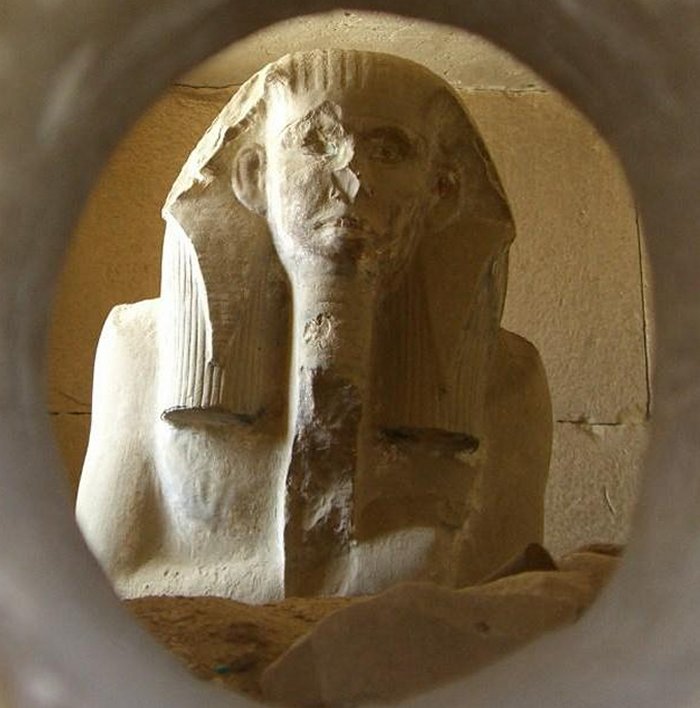 Pharaoh Djoser's Ka Chamber. Image credit: Vincent Brown – source
Pharaoh Djoser's Ka Chamber. Image credit: Vincent Brown – source
Djoser (also known as Zoser) was responsible for the world's first known monumental stone building, the Step Pyramid at Saqqara, built during the Third Dynasty (c. 2686 BC–c. 2613 BC) and became his tomb. Later other pyramids were built.
Little is known about Djoser ( also known as Netjerikhet), who succeeded to the throne when the country of Egypt experienced many political problems and instability. His ambitious goal was to overcome them.
It is believed that Djoser managed to extend and strengthen his rule and reach as far as Aswan, the First Cataract (later the official southern boundary of Egypt). During his reign, Egypt was politically stable, with a flourishing economy.
At the same time, however, it is also known that for seven years in a row, the Nile River had failed to rise high enough to irrigate the fields, and in consequence, his people experienced the devastation of crops and starvation. Djoser had to act quickly, so he consulted his chief advisor Imhotep about the source of the inundation, who, in turn, discovered that Hapi (Hapy), the early Egyptian god of the Nile and the spirit of the inundation, lived in twin caverns located under the island of Elephantine. When it was time for the Nile to rise, the ram god Khnum controlled the floodwaters, who alone could unbolt the door of the caverns. When Djoser heard this, he made lavish offerings to Khnum.
That night in a dream, Khnum promised Djoser that he would release Hapi, so it happened. The seven-year-long drought and associated famine subsequently ended with a plentiful harvest.
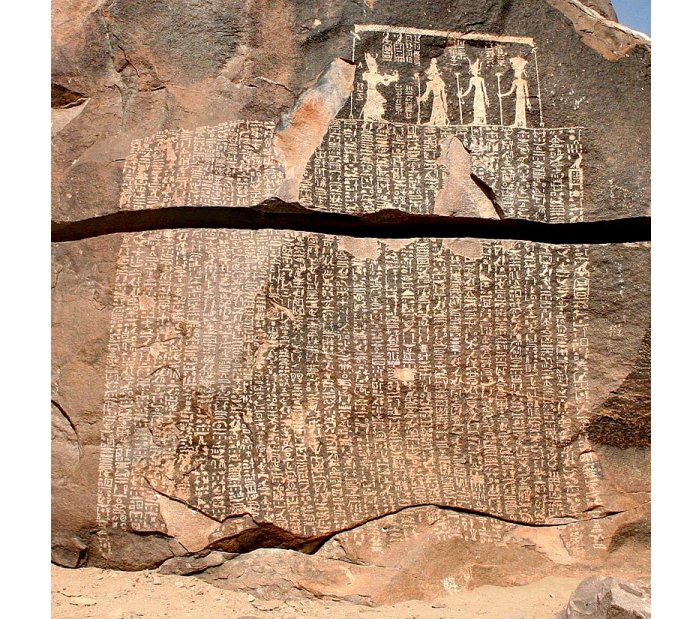 The Famine Stela, mentioning Djoser. Image credit: Morburre - CC BY-SA 3.0
The Famine Stela, mentioning Djoser. Image credit: Morburre - CC BY-SA 3.0
The Pharaoh Djoser is associated with a massive and innovative structure known as the Step Pyramid. Imhotep primarily supported his building project, the Pharaoh's genius designer, and his vizier, who decided to build a gigantic stone mastaba. During the construction, they made another mastaba on top of the first and another on top of the second. They continued this process until they had enlarged the structure into the world's first pyramid. It was called a "step pyramid," made of limestone.
It consisted of six terraces some 200 feet (60 m) high, a base measuring approximately 125 x 109 meters, and only one close-fitting corridor leading to the close center of the monument and ending in a rough chamber where the entrance to the tomb shaft was once hidden.
Djoser (Zoser), whose name means as much as the 'saint,' was the son of queen Nimaathap and king Khasekhemwy (ca. 2690 BC), the last Pharaoh of the Second Dynasty of Egypt. However, very little is known about this great personality of ancient Egypt.
He took the throne after the death of his elder brother. In the first period of the reign, the mother ruled as regent because of her son's young age. He probably led initially from Abydos but then from Memphis.
 King Djoser's name and titles appear between the 'djed pillar and 'tyet' amulet, followed by Imhotep's titles beginning 'The Treasurer of the King of Lower Egypt,' on this broken-off statue base. (Artifact is stored in Cairo Museum.)
King Djoser's name and titles appear between the 'djed pillar and 'tyet' amulet, followed by Imhotep's titles beginning 'The Treasurer of the King of Lower Egypt,' on this broken-off statue base. (Artifact is stored in Cairo Museum.)
Historically, Djoser became the ruler of Upper and Lower Egypt, the first king of the third dynasty of the old state period, and reigned in 2690-2670 BC (or 2720-2700 BC). Some other sources, however, even propose the date 2686-2667 BC. Until the end of the history of ancient Egypt, he was considered a highly respected and profoundly honored ruler.
Many Treasures Robbed From The Step Pyramid
Unfortunately, the pyramid - the tallest and most massive building of the complex covering 40 acres (16 hectares) that included courtyards, shrines, and the priests' living quarters – was not protected enough from looters.
Still, excavations revealed plenty of stone vases under the pyramid. In one of the passages, archaeologists discovered some of Djoser's remains and a mummified left foot probably belonging to the king. Among other discoveries is an alabaster coffin containing a young, perhaps eight-year-old child, accompanied by other deceased of the royal family. These valuable goods - decorated with still recognizable names of earlier Egyptian kings – still represent beautiful forms and high-quality artistry.
Other findings include two boundary stones in the king's Heb Sed court, located within his pyramid complex. Djoser is also shown performing the Heb Sed in a false doorway inside his pyramid.
Statue of Djoser in Cairo Museum. This statue was originally in the serdab in the step pyramid complex. Egyptian Museum - Copyrighted free use
A box-like structure (in Arabic: serdab) made of Tura limestone, used in the wealthiest tombs, was discovered during the excavations of the pyramid. Within the serdab - with two small holes pierced through its front-facing slope - there was a life-size seated figure of Djoser.
Archaeologists and other experts consider this sculpture the oldest sculpted royal figure from Egypt. The artwork depicts "the king closely wrapped in a long white cloak, probably used in the king's jubilee or heb-sed festival.
Food offerings and incense would have been placed on an altar before the two small eyeholes in the wall of the serdab, enabling the ka (the spirit of the king) to partake of the spirit substance - while, at the end of the day, the mortuary priests could enjoy the material substance of the offerings." 1
Serdab of Djoser's Pyramid. Image credit: Jon Bodsworth – source
Perhaps, the great Pharaoh Djoser is forgotten today. Still, his and Imhotep's creation - considered the House of the Soul - created a deep, long-lasting impression for millennia. The pyramid of Pharaoh Djoser and its surrounding funeral complex is today recognized worldwide as the first building built entirely of stone.
After a reign of approximately nineteen years, Djoser died and was succeeded by Sekhemkhet around 2649 BC. Building such a massive structure as the Step Pyramid took minimal time. Still, he managed to finish this project working with Imhotep, which was well-functioning cooperation.
Written by – A. Sutherland - AncientPages.com Senior Staff Writer
Updated on January 27, 2023
Copyright © AncientPages.com All rights reserved. This material may not be published, broadcast, rewritten or redistributed in whole or part without the express written permission of AncientPages.com
Expand for references- Clayton, Peter A, Chronicle of the Pharaohs
History, Captivating. Ancient Egypt
Bunson, M. The Encyclopedia of Ancient Egypt.
More From Ancient Pages
-
 Major Puzzle In Mammal Skull Shape Evolution Solved
Evolution | Dec 20, 2023
Major Puzzle In Mammal Skull Shape Evolution Solved
Evolution | Dec 20, 2023 -
 Very Rare Ancient Roman Horse Brooch Discovered In UK
Archaeology | Mar 7, 2020
Very Rare Ancient Roman Horse Brooch Discovered In UK
Archaeology | Mar 7, 2020 -
 Klerksdorp Spheres – Controversial And Out-Of-Place In Time Metallic Spheres From South Africa
Artifacts | Apr 8, 2017
Klerksdorp Spheres – Controversial And Out-Of-Place In Time Metallic Spheres From South Africa
Artifacts | Apr 8, 2017 -
 Mystery Of The British Pompeii Deepens – Bronze Age Settlement Destroyed By Dramatic Fire
Archaeology | Jun 23, 2019
Mystery Of The British Pompeii Deepens – Bronze Age Settlement Destroyed By Dramatic Fire
Archaeology | Jun 23, 2019 -
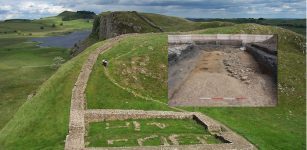 Fantastic Discovery At Hadrian’s Wall Reported By Archaeologists
Archaeology | Sep 10, 2022
Fantastic Discovery At Hadrian’s Wall Reported By Archaeologists
Archaeology | Sep 10, 2022 -
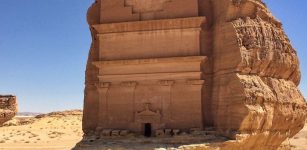 Mada’in Saleh: Magnificent Timeless Rock-Cut Tombs And Monuments In The Desert
Civilizations | Oct 30, 2018
Mada’in Saleh: Magnificent Timeless Rock-Cut Tombs And Monuments In The Desert
Civilizations | Oct 30, 2018 -
 Rene Descartes – Independent French Thinker And His Main Ideas
Featured Stories | Apr 27, 2021
Rene Descartes – Independent French Thinker And His Main Ideas
Featured Stories | Apr 27, 2021 -
 Brain Development Differs Between Neanderthals And Modern Humans – New Study
Archaeology | Sep 5, 2022
Brain Development Differs Between Neanderthals And Modern Humans – New Study
Archaeology | Sep 5, 2022 -
 Solar Eclipses And New Attempt To Date Homer’s Iliad And Odyssey
Myths & Legends | Jan 7, 2016
Solar Eclipses And New Attempt To Date Homer’s Iliad And Odyssey
Myths & Legends | Jan 7, 2016 -
 Ancient History Of The Samurai Armor
Featured Stories | Aug 27, 2018
Ancient History Of The Samurai Armor
Featured Stories | Aug 27, 2018 -
 Mysterious Jars In Laos – Long-Lasting Mystery Is Still Unsolved
Archaeology | May 20, 2019
Mysterious Jars In Laos – Long-Lasting Mystery Is Still Unsolved
Archaeology | May 20, 2019 -
 Warming Of North Pacific Helped First Human Migration From Asia To North America
Archaeology | Dec 15, 2020
Warming Of North Pacific Helped First Human Migration From Asia To North America
Archaeology | Dec 15, 2020 -
 LIDAR Discovers Mysterious Maya Underground Chamber In The Rainforest
Archaeology | Jul 22, 2024
LIDAR Discovers Mysterious Maya Underground Chamber In The Rainforest
Archaeology | Jul 22, 2024 -
 Unexplained Phenomenon Around Yellowstone Puzzles Scientists
Featured Stories | Nov 12, 2018
Unexplained Phenomenon Around Yellowstone Puzzles Scientists
Featured Stories | Nov 12, 2018 -
 Norman Dominance Of Europe Inspired First Crusades In The Holy Land – New Book Claims
History | Sep 8, 2022
Norman Dominance Of Europe Inspired First Crusades In The Holy Land – New Book Claims
History | Sep 8, 2022 -
 Ancient Roman Wine Was Spicy And Smelled Like Toast – Dolia Vessels Reveal
Archaeology | Jan 25, 2024
Ancient Roman Wine Was Spicy And Smelled Like Toast – Dolia Vessels Reveal
Archaeology | Jan 25, 2024 -
 Riddle Of The Hanging Gardens Of Babylon – Ancient Place Still Shrouded In Mystery – Part 1
Featured Stories | Jun 7, 2019
Riddle Of The Hanging Gardens Of Babylon – Ancient Place Still Shrouded In Mystery – Part 1
Featured Stories | Jun 7, 2019 -
 Rare Medieval Painting Depicting Judas’ Betrayal Of Christ Saved By Reformation ‘Recycling’
Archaeology | Nov 27, 2015
Rare Medieval Painting Depicting Judas’ Betrayal Of Christ Saved By Reformation ‘Recycling’
Archaeology | Nov 27, 2015 -
 On This Day In History: Battle Of Rhyndacus – Oct 15, 1211
News | Oct 15, 2016
On This Day In History: Battle Of Rhyndacus – Oct 15, 1211
News | Oct 15, 2016 -
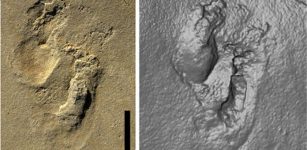 Controversial Discovery Of 5,7-Million-Year-Old Footprints On Crete Could Re-Write History Of Human Evolution
Archaeology | Sep 5, 2017
Controversial Discovery Of 5,7-Million-Year-Old Footprints On Crete Could Re-Write History Of Human Evolution
Archaeology | Sep 5, 2017

